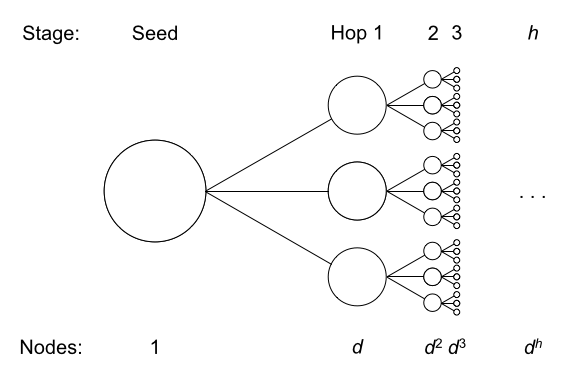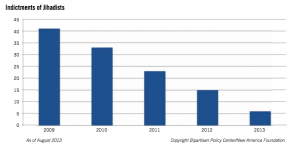Dianne Feinstein Glosses Jeffrey Miller Phone Dragnet Decision
Dianne Feinstein just released a statement effectively saying she likes the FISA Court phone dragnet decisions and the one Judge Jeffrey Miller made in the Moalin case better than the one Richard Leon issued yesterday.
Clearly we have competing decisions from those of at least three different courts (the FISA Court, the D.C. District Court and the Southern District of California). I have found the analysis by the FISA Court, the Southern District of California and the position of the Department of Justice, based on the Supreme Court decision in Smith, to be compelling.
But I’m particularly interested in the way she describes the Miller decision.
It should be noted that last month Judge Jeffrey Miller of the Southern District of California found the NSA business records program to be constitutional.
Judge Miller was ruling on a real world terrorist case involving the February 2013 conviction of Basaaly Moalin and three others for conspiracy and providing material support to the Somali terrorist organization Al-Shabaab. In that case, the NSA provided the FBI with information gleaned from an NSA query (under Section 215) of the call records database that established a connection between a San Diego-based number and a number known to be used by a terrorist with ties to al Qaeda.
In upholding these convictions, Judge Miller cited Smith v. Maryland (1979) the controlling legal precedent and held the defendants had ‘no legitimate expectation of privacy’ over the type of telephone metadata acquired by the government—which is the ‘to’ and ‘from’ phone numbers of a call, its time, its date and its duration. There is no content, no names and no locational information acquired.
As a threshold matter, Judge Miller did not decide last month that the phone dragnet was constitutional. He decided sometime around June 5, 2012, and that decision remains sealed in its entirety. He treated Moalin’s bid for a new trial as a reconsideration of his earlier decision, stating he had,”already considered and addressed many of the FISA and CIPA arguments from a federal and constitutional law perspective.” He deliberated just one day after the hearing on a new trial before rejecting the motion. Which means that his decision rests primarily on whatever representations the government made in secret — and none of us have gotten to see that decision.
If Senator Feinstein would like to use her position on the Senate Intelligence and Judiciary Committees to liberate that decision given that she’s relying on it, by all means let’s have some transparency!
Now look at how Feinstein characterizes the issue before Miller:
[T]he NSA provided the FBI with information gleaned from an NSA query (under Section 215) of the call records database that established a connection between a San Diego-based number and a number known to be used by a terrorist with ties to al Qaeda.
That is, she characterizes Miller’s review as weighing whether using an (at least) second-degree hop in a database to establish probable cause is Constitutional.
But that’s most definitely not what Miller did. Instead, he ignored the database entirely (the word “database” doesn’t appear in his ruling), and assessed the use of what Feinstein describes as a database query as two separate pen registers.
Defendants argue that the collection of telephony metadata violated Defendant Moalin’s First and Fourth Amendment rights. At issue are two distinct uses of telephone metadata obtained from Section 215. The first use involves telephony metadata retrieved from communications between third parties, that is, telephone calls not involving Defendants. Clearly, Defendants have no reasonable expectation of privacy to challenge any use of telephony metadata for calls between third parties. See Steagald v. United States, 451 U.S. 204, 219 (1981) (Fourth Amendment rights are personal in nature); Rakas v. Illinois, 439 U.S. 128, 133-34 (1978) (“Fourth Amendment rights are personal rights which, like some other constitutional rights, may not be vicariously asserted.”); United States v. Verdugo-Uriquidez, 494 U.S. 259, 265 (1990) (the term “people” described in the Fourth Amendment are persons who are part of the national community or may be considered as such). As noted in Steagald, “the rights [] conferred by the Fourth Amendment are personal in nature, and cannot bestow vicarious protection on those who do not have a reasonable expectation of privacy in the place to be searched.” 451 U.S. at 219. As individuals other than Defendants were parties to the telephony metadata, Defendants cannot vicariously assert Fourth Amendment rights on behalf of these individuals. To this extent, the court denies the motion for new trial.
The second use of telephony metadata involves communications between individuals in Somalia (or other countries) and Defendant Moalin. The following discusses whether Defendant Moalin, and other Defendants through him, have any reasonable expectation of privacy in telephony metadata between Moalin and third parties, including co-defendants. [my emphasis]
I believe that in documents that have been released since Miller’s ruling, the government distinguished this from pen registers (digging up those references now). But one thing’s clear: Miller didn’t approve the use of a database to show that his two-degree link between Moalin and Aden Ayro amounted to probable cause that he was an agent of a foreign power. He approved of two or more discrete pen registers.
That may or may not amount to a legal difference (Leon didn’t consider the database as such either). But I find it mighty telling that Feinstein describes the dragnet in terms her favored criminal ruling does not.



